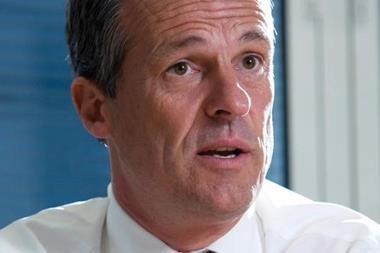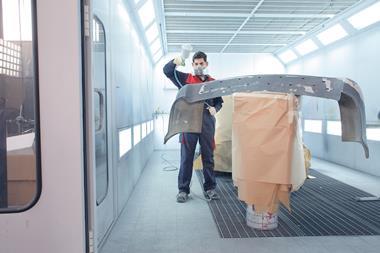Equity Red Star case prompts RSA bid for pan-industry ‘add on’ agreement
RSA is seeking bilateral agreements with other insurers over its controversial repair cost arrangements, as it seeks to establish ground rules for the industry on the increasingly fraught issue.
Chief executive Adrian Brown has met his counterparts at other major motor insurers in the wake of last month’s damning Romford County Court judgement, which found that the insurer had used its repair arrangements to fabricate add-on charges.
Insurance Times understands that bilateral discussions have centred on how the insurers could agree in pairs to reduce repair charges down to cost price. This would not affect historic charges yet to be paid.
RSA has stood by its repair cost arrangements, claiming they are more transparent than those of their rivals, but in effect, no different. They also maintain they are legal and will be attempting to prove this with a test case, to be heard by the High Court next May. RSA has put dealing with any historic charges on ice until the case has been resolved.
If RSA loses the case, industry sources speculate that a wave of litigation could follow. RSA, for example, could launch legal action against fellow insurers if it believed them to have inflated costs.
Allianz confirmed that it had held talks with RSA over the subrogated claims issue. Allianz divisional claims manager, technical, Martin Saunders said: “Allianz has been speaking to RSA regarding their method of calculating repair costs, which they are using in subrogated claims against us. Court processes are under consideration and while this situation continues, any dialogue will remain between the two parties.”
Co-operative Banking Services general insurance director David Neave told Insurance Times that the problems surrounding inflated repair costs went far beyond any individual company’s arrangements. “The issue is that almost every insurer is arbitraging cost of repairs between at-fault and not at-fault”.
“At one end of the spectrum, some of that is relatively simple, such as paint rebates that are not being passed on to the third-party insurer. At the other end of the spectrum, some people have constructed quite sophisticated models that seem to have at their heart the intention of gaming that system.”
He said: “I would ask: are those models doing anything for the ultimate consumer or are they simply bidding up the cost of insurance across the market?”
In the Romford County Court judgement, Judge Platt threw out RSA’s bid to recover a £1,825 repair bill that the at-fault driver’s defendant insurer Equity Red Star had refused to pay.
The case centred on RSA’s use of a wholly owned subsidiary company, RSA Accident Repairs Limited, which arranges repairs for its non-fault customers.
The judge found that the subsidiary had charged the defendant’s insurer not only the costs charged by the sub-contracted vehicle repairer but add on sums as well. He found that if RSA’s subrogation model was adopted by the rest of the industry, it would inflate the cost of minor motor repair claims by 25%.
Following last month’s judgement, a number of insurers have lodged cases against RSA in the Commercial Court challenging the insurer’s subrogation arrangements.
The spat between insurers over repair costs has come to a head as the Office of Fair Trading mounts a probe into competition in the motor insurance market, which includes an examination of insurers’ repairs arrangements.
Talking points …
● Insurers’ repair arrangements are murky, but last month’s damning court judgement against RSA has shone a harsh light on the issue.
● The image of the insurance industry has already taken a big hit this year amidst the furore surrounding referral fees. Could subrogation be the next big reputation-damaging issue?
● But regulating this particular can of worms could cause more problems than it solves while an industry-wide protocol could be deemed anti-competitive. What action can the industry take now to head off future intervention on this issue?
Hosted by comedian and actor Tom Allen, 34 Gold, 23 Silver and 22 Bronze awards were handed out across an amazing 34 categories recognising brilliance and innovation right across the breadth of UK general insurance.












































No comments yet